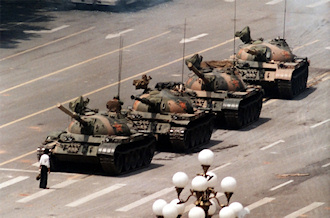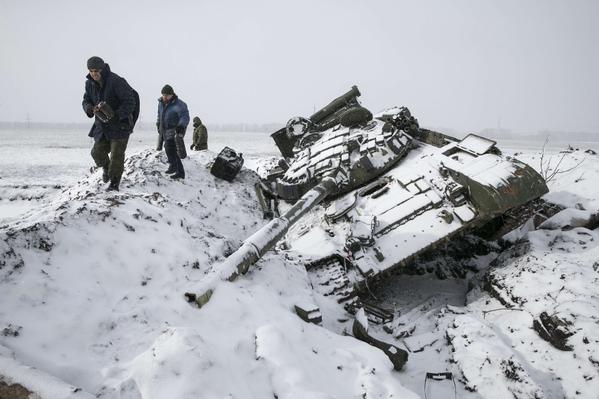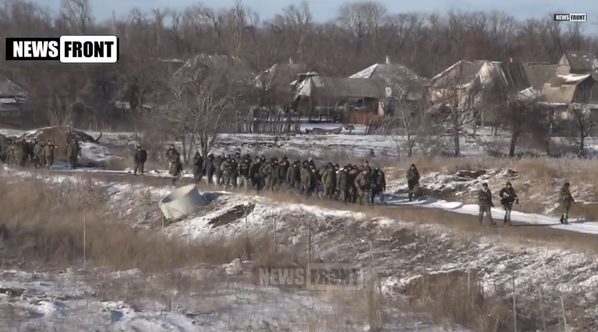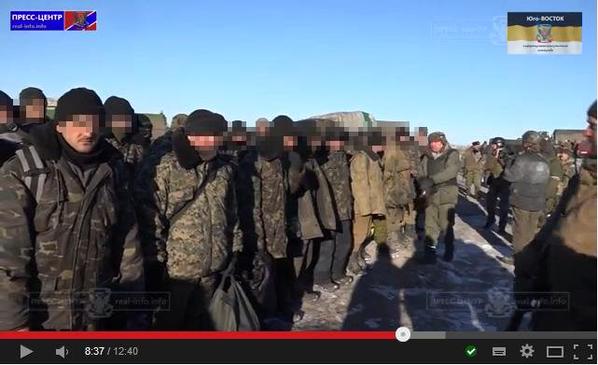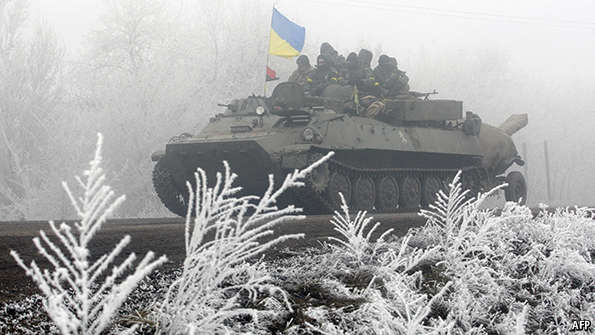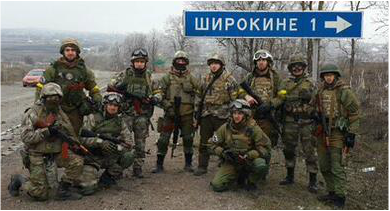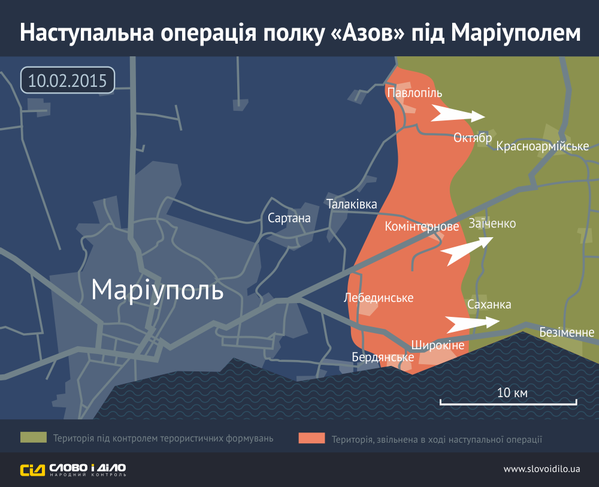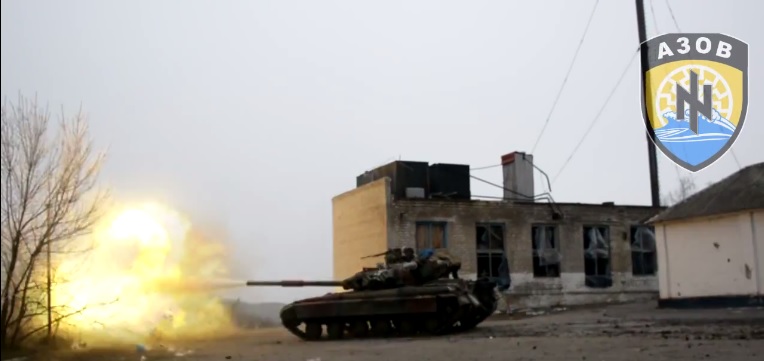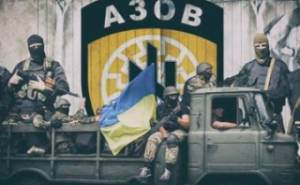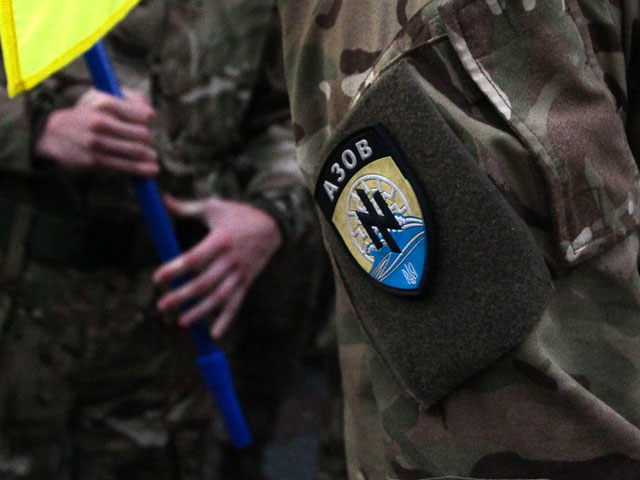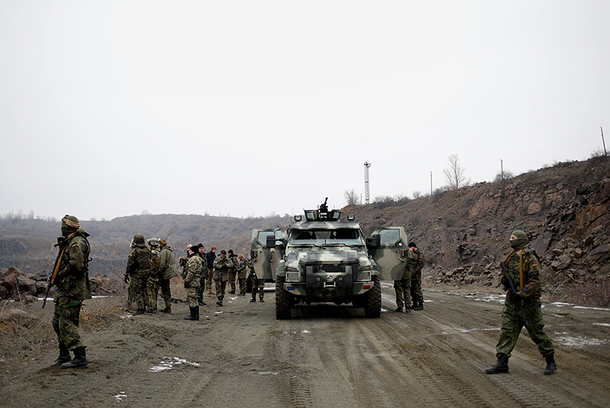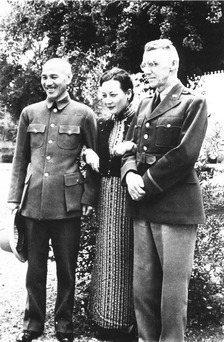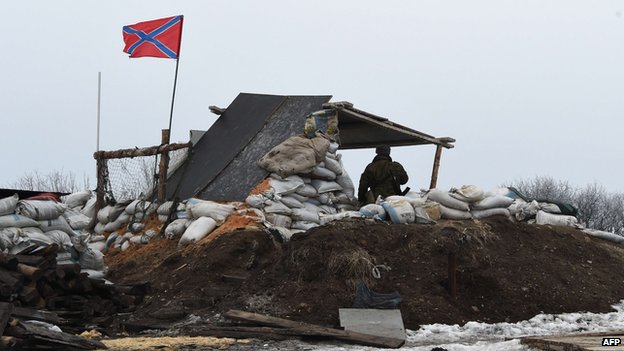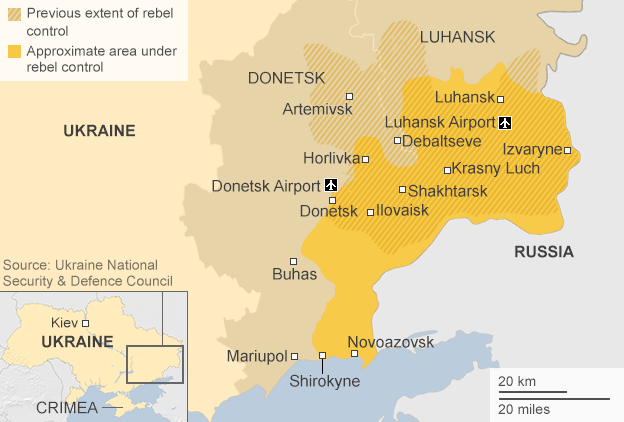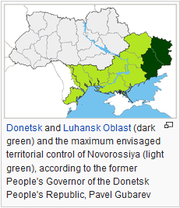Month: February 2015
bookmark_borderPost-287: “Tienanmen Square June 4, 1989” “I’ve Never Heard About That”
I met them studying Korean at a university in South Korea, one of the most prestigious in the country, at which a certain labor dispute occurred between the cleaning staff and the university administration beginning in December 2014. As far as I know, it is still unresolved as the new academic year approaches (beginning March 2nd, 2015).
During the January to February semester, I brought up the subject of these ongoing protests from time to time, either with our Korean teacher or other students.
One such time was around mid-February. I was with a Singaporean and a Chinese, both of whom have the initials Q.X. The one from China (Korean name’s initials: ㅊ우ㅅ) was born in 1990 and majored in physics in China. She is planning to study in South Korea for a Master’s degree. As we were walking along, for some reason I said something like, “The janitors’ protests are still going on”. The girl from China said, wistfully, “I wish people in China could protest like that”. (She said this in English to us. Using English was a sign that she was trying to make a serious point. Unimportant talk can be in Korean.) As she said this, my mind immediately jumped to images of 1989 Beijing. I decided to cautiously break the taboo.I mentioned it, cautiously, something like “They tried that at Tienanmen Square and the result wasn’t good.” Q.X. from China got a puzzled look. I figured maybe she misunderstood my words: Beijing. 1989. Protests. I didn’t even mention the massacre part. Q.X. from China said “I’ve never heard about that. Maybe they never taught us about it.” She looked more confused than defensive. That was the end of that.
A few days later. The semester had ended. (Note: Of the original twelve students in our class, just two passed the exams outright [including Q.X. from China, though this was her second time taking the level], with two others failing narrowly such that they can take a re-test a week later; all others failed outright [including me] or didn’t even take the final exam). Most of those from our class who were still around gathered for dinner, several rounds of it at different places, as is the Korean custom.
At one point, during one of these “rounds”, the group got divided up and I was with the same two “Q.X.”s again. Spirits were high and we all trusted each other, so I decided to follow up on this Tienanmen Square business. The Singaporean and I talked about the world-famous picture of the lone man standing in front of the tanks. I then looked up this photo on my phone, and showed the Chinese girl. “Have you ever seen this before?” The same confused look as before. It was clear that this was the first time she had ever seen the photo in her life.
I said it was my understanding that the lone protestor was killed that day. The Singaporean said this wasn’t the case, as the video shows him climbing the tanks after a while, not run over. We looked around online and found that his most likely fate was an executioner’s bullet to the head in the weeks after June 4th.
Curious and emboldened by the fact that the Singaporean and I were discussing the famous photograph (and video recording) so freely, the Chinese Q.X. found the Chinese Wikipedia entry on the event (I’d guess written by Taiwanese; the article is definitely blocked in China itself). She sat for five minutes, saying nothing, silently reading. I addressed her several times in her trance. She hardly responded and read on. She was highly interested and not about to answer any dumb comment from me at this time.
She was born in 1990. Her parents will remember this event. I’m surprised, that after nearly 25 years of life, she had never heard of the Tienanmen Square protests of June ’89. Schools are banned from teaching about it, okay, but her parents never bothered telling her? She never just happened to hear about it from somewhere?
So it is.
bookmark_borderPost-286: [Video] Ukraine Prisoners of War Interviewed
Some interviews were also done with POWs which I found interesting and have transcribed here. Some pro-Ukrainians have commented that parading POWs on film violates the Geneva Convention, but here it is:
[On a snow-covered clearing, daytime, dozens of men are lined up, warmly dressed for the cold]
Rebel Commander: [heavyset, wearing a Soviet-style cap] Your army, your government, abandoned all of you from the beginning. From the very beginning, when you were sent here. They simply you threw you out here. They sent you to kill civilians, not us militia. [Ukraine government POWs are shown listening, many with heads down] Each of you will have the opportunity to return home. We will treat you with honor and dignity. We will feed, bathe, and provide a change of clothes for you. You should know that this is the beginning of our long way. We nevertheless take into account how you grimace and how you wish us ill. But I guarantee, as an army colonel, that no one will harm you or beat you. Understood?
POWs: [Weakly] Understood.
[An extended version of this footage shows several interviews.]
[Interview #1: A reporter interviews one of the Ukraine Government Army POWs. The prisoner looks to be over 30 years old, with a long nose and soft voice]
Reporter: What is your surname?
POW #1: Boreiko.
Reporter: Where are you from?
POW #1: I’m from Kherson.
Reporter: From Kherson?
POW #1: Yes.
Reporter: How did you get into the army?
POW #1: I was summoned (=conscripted)
[The POWs are told to begin to march and do so]
Reporter: Do your relatives know about your current status?
POW #1: No.
[He marches away and the reporter does not follow]
[Interview #2: This POW looks to be in his early or mid 20s and has blonde facial hair]
Reporter: How long have you been at Debaltsevo?
POW #2: Since December 22nd.
Reporter: Did your command inform you that your unit was encircled?
[The POW weakly smiles but hesitates to answer]
Reporter: What was your command telling you? What tasks were you given?
POW #2: They just told us to hold. Stay. We just — Well, guarded the territory.
Reporter: How were you captured?
POW #2: Our commander told us we were laying down our arms and leaving.
Reporter: Leaving with a fight, or were you going to —
POW #2: No. [Pause] The commander told us we were taking our personal belongings and leaving.
[Interview #3: This POW looks to be in his mid or late 20s, with dark eyes and a brown goatee and a blunt style of speaking. He punctuates his statements with emphasis. This interview takes place later, on a bus filled with POWs]
Reporter: Did your relatives tell you that you were encircled?
POW #3: Well, they told us recently. But what could I do? Go on the run? Where to?
Reporter: I see.
POW #3: I’m a private. I was under orders from my command.
bookmark_borderPost-285: Fog of War, at Debaltseve
The term “fog of war” refers to information. War is something dynamic (situation always changing), emotionally charged, and subject to secrecy, disinformation, misinformation, and other forms of perceptional distortion, so nobody really knows what’s going on at any given time.
I was surprised to see the Prestige Media in the West (AP, New York Times, CNN, BBC, and so on) on Wednesday run headlines like “Ukrainian Army Retreats from Debaltseve”. All the sources I was following (mostly pro-Ukrainian) agreed that there was an encirclement (pocket), a seriously bad situation, and that this pocket finally caved in around Tuesday and early Wednesday of this week, with many government casualties. A major rebel victory within the scope of the war so far. The Western major media was simply copying Kiev press releases, I think.
What is the truth of what happened at the place called Debaltseve (Debaltsevo in Russian)? After weeks of inaction by the Ukraine side, a breakout attempt occurred but how organized it was is unclear. What is clear is the Debaltseve vicinity is now under uncontested rebel control. The Ukraine president claims he ordered a successful withdrawal. Rebel sources say the government lose major casualties including up to a thousand prisoners surrendered. Independent journalists seem to favor the rebels’ version of events:
It was unclear Wednesday [Feb. 18th 2015] how many of the thousands of Ukrainian soldiers trapped in the eastern Ukrainian town [Debaltseve] had survived the hellish retreat under enemy fire and avoided capture. President Petro O. Poroshenko put the figure at 80 percent, but since the Ukrainian military has never commented on its troop strength, the final accounting may never be known.
By midday on Wednesday, as limping and exhausted soldiers began showing up in Ukraine-held territory, it became clear that the Ukrainian forces had suffered major losses, both in equipment and human life.
“Many trucks left, and only a few arrived,” said one soldier, who offered only his rank, sergeant, and first name, Volodomyr, as he knelt on the sidewalk smoking. “A third of us made it, at most.” [NY Times]
In every war, on each side, we find hotheads and liars who seek to demonize the enemy (much worse than Kiev’s seemingly false claim of an orderly withdrawal– some government soldiers who escaped reportedly abandoned their equipment and flat-out ran for a few miles in the proper direction without stopping).
Certain people calling themselves journalists, sympathetic to the rebels, are now claiming to have discovered that “Ukraine government soldiers executed civilians” in the Debaltseve pocket. Why Ukraine government soldiers would arbitrarily “execute civilians” is beyond comprehension and not explained, but this is what’s being broadcast now over Russian media, with supposed photographic proof, and presumably many believe it. The Ukraine side, which I support, is also capable of these kinds of malicious lies (and I assume the claim of executions of civilians at Debaltseve is just one of those typical war lies, born in the fog of war, and almost always quietly abandoned when the fog lifts.)
bookmark_borderPost-284: Ukraine Civil War. Surrender at Debaltseve
T
his closes up the “Debaltseve Pocket” which I wrote about in Post-#283 last week. The total loss was predicted as early as January 27th by a German military intelligence analyst writing under the alias Conflict Reporter, one of the best sources on the war. The end of the fighting at Debaltseve will free up many thousands of pro-Russian rebels for action elsewhere in the present Ukraine war.R
ebel leaders in East Ukraine in 2014-15 have said that Ukraine Army prisoners taken in this war will be tasked with “rebuilding the ruined cities” in the warzone after independence, i.e. forced labor.Stalin must’ve refused to release the Stalingrad prisoners all those years because they were symbolic of the greatest single Soviet victory in the war (Khruschev finally released them two years into his term as Soviet leader). Debaltseve is likewise a symbol of Russian superiority of arms, as they may see it, and perhaps of Ukraine’s inability to win the present war
.Conspiracy Theories about the Ukraine Army Command
The most obvious explanation for the fall of Debaltseve is a combination of (a) the Ukrainian Army’s incompetence, (b) heavy Russian intervention plus (c) Russian determination to have their Stalingrad 2015. Depending on your point of view, which side you favor and/or oppose, it seems to me that one will emphasize one or the other of these. All may be valid and explain things well enough. There are also two “conspiracy theories” circulating among serious people.
(1) Mixed Loyalties, or, as some might call it, “treason”. The Kiev military hierarchy is full of old hands from the Soviet era with deep ties to Russian state security (the successor to the KGB), and perhaps vague personal loyalties to “Soviet identity” (an identity that persists strongly in places into the 2010s, as I learned from my time in Kazakhstan). Hundreds in the Ukraine Army have been arrested for spying in the past year. One high-placed officer was arrested two weeks ago for passing secret information on Ukrainian positions to the rebels, which was used to coordinate attacks. (If true, this seems to be blatant treason, no two ways about it, and in any nation at war would call for the firing squad, wouldn’t it?). In other words, this conspiracy theory has it that the Ukraine Army’s own general staff has elements in it that want Ukraine to not win the war as it exists at present — i.e. a war pitting Ukraine as a supposed NATO proxy against the Rebels as a supposed (definite) Russian proxy. These elements in the Ukraine Army, the conspiracy theory holds, subtly sabotage the war effort. This seems a wild theory but has believers in Ukraine itself.
Here is the story of a Ukraine Army Lieutenant Colonel arrested for spying on Feb. 4th, 2015:
[Recently-arrested Ukraine Army] Lt. Col. Mykhailo Chornobai had been at the center of an espionage ring in the capital and had passed military secrets directly to an agent of the separatist Donetsk People’s Republic, including the locations of volunteer regiments that were then used to pinpoint artillery attacks. […] Colonel Chornobai was among about 300 people working in the military sphere who had been arrested since the start of the conflict.
The arrest further deepened mistrust of the leadership in Kiev that is already pervasive among the poorly equipped rank-and-file soldiers and midlevel commanders fighting on the front line. And it reinforced a view prevalent on the battlefield that the military leadership cannot be trusted to manage any weapons delivered by Western allies because of their ties to the Russian military and security service, the F.S.B. […]“Very often one cannot tell where the F.S.B. stops and one of our military units begins,” said Semyon Semenchenko, a pro-government paramilitary leader [of the Volunteer Donbas Battalion] and member of the Ukrainian Parliament, referring to the Russian successor to the K.G.B. […] [NYTimes]
It seems everyone knows that Russia is a defacto belligerent in this war, with constant flows of men and material to the rebels to include lots of shiny new equipment and alleged active-duty Russian soldiers. The big players (NATO, Western governments) and Putin himself don’t want to quite admit this, in a mutual Emperor’s New Clothes situation. Definitely a large majority of rebel fighters are actually from Russia, of course. Some are Middle Eastern (Caucauses) by appearance and others even East Asiatic, which is a dead giveaway that they are from Russia’s Far East.
Then again, the rebels’ entire point is that East Ukraine is majority-Russian, and the border is artificial, which is true.
Meanwhile, the Ukraine’s volunteer units in this war (which were raised outside the purview of the Army during the crisis last year) it seems continue to have high morale relative to the hapless government soldiers.
I recently learned that an American citizen, age 55, a former U.S. Army Ranger, of Ukrainian heritage, and an early member of the pro-Ukraine Donbas Volunteer Battalion, was killed last August, just weeks after giving an interview with Canadian journalists (here it is on Youtube). His name was
Mark Paslawsky, born in New Jersey but moved to Ukraine in the 1990s. He was one the 1,000 or so on the Ukrainian side killed in the disaster at Ilovaisk. The best of the volunteer units is the Azov Volunteer Battalion, which continues to fight in the south.
An Azov Battalion tank in action at
Shyrokyne:bookmark_borderPost-283: Ukraine Civil War — The Azov Battalion
It has just allowed 5,000 of its soldiers to be encircled by the pro-Russian rebels at a place called Debaltseve.
The Ukraine government denies the encirclement, but informed observers are saying it’s true.Looking at hasty ongoing Ukrainian efforts at this very moment, it seems not impossible that [the Ukraine Army] will be able to breach the de facto pocket [at Debaltseve], which holds since 15 hours [Feb 10], in the coming hours. However if it does so, using all its reserves in the area, it will only be a question of hours or days, before even stronger Russian army reinforcements will push back the Ukrainian army forces and re-close the pocket. […][Up to] 5,000 [Ukrainian] troops are besieged and the outlook is gloomy. [Source]
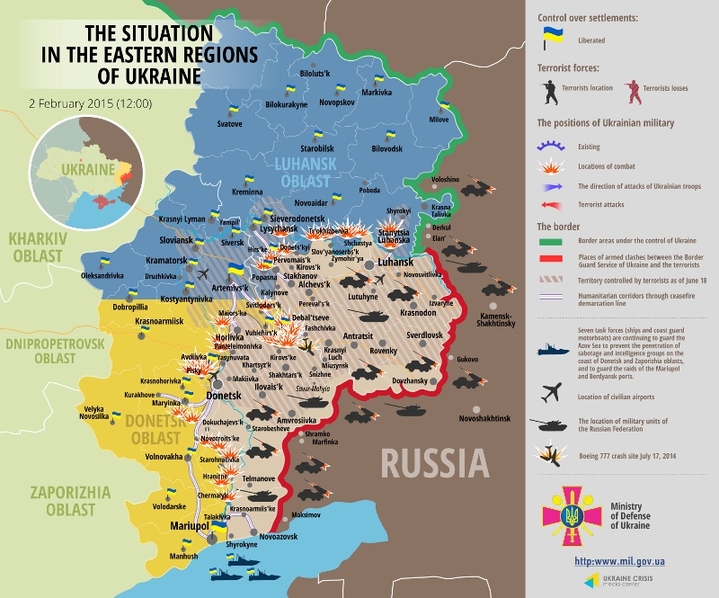
|
(1) Defence.pk : Civil War in Ukraine — forum, including many pro-Russian contributors.
(2) DefenceTalk.com : Ukraine Crisis — forum, including many translations of Russian sources; tending to professional-level analysis. (3) ConflictReport.info Up-to-date news and commentary from a pro-Ukraine / pro-NATO perspective by a German conflict intelligence analyst. (This person does some professional-level “geolocating”, i.e. comparing actual locations in the vast amount of video footage released daily by both sides to Google Maps to confirm actual locations of the two sides, thereby slicing past disinformation by both sides about who controls what — he apparently “called” the fall of the Donetsk airport many days before the Kiev government admitted it, using this technique). (4) Kyiv Post — English-language newspaper and very pro-Ukraine. |
|
A disproportionate share of what military successes Ukraine has had are — this is amazing to me — due to the Azov Battalion (also called the Azov Regiment), a non-professional volunteer formation.
|
|
Azov is composed totally of non-(current-)military volunteers, including foreigners (Croatians, Finns, Norwegians, British, French, Italians are active in it). It grew up around Right Sector’s (see #197) armed political paramilitary group that existed before the war (see the screenshot in #197 #197)), dozens of whose members were killed in the February 2014 Kiev (see post-197), dozens of whose members were killed in the February 2014 Kiev streetfighting in February 2014 in Kiev that brought down the conniving pro-Russian government at the time., dozen, sostreetfighting that brought down the conniving pro-Russian government at the time.You can see some of these men pre-war in the screenshot in #197197#197. The video itself has been purged from Youtub
|
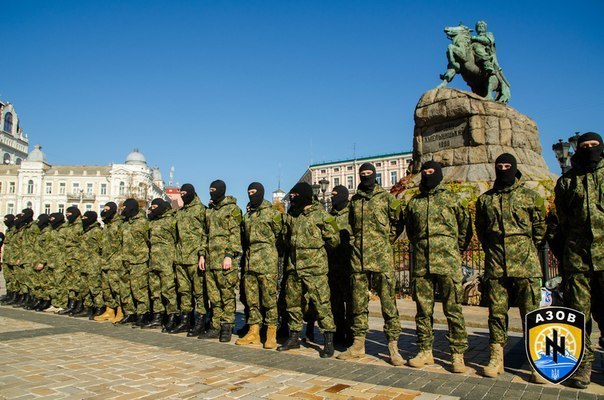
New recruits mustered into Battalion Azov / Jan. 2015, Kiev / [from an Azov website]
|
Its numbers are secret, but the Ukrainian government “approved” bringing this formation to 12,000 volunteers last year.
After a few weeks of steady losses for the Ukrainian side, here is what the Azov Battalion has done in the past 36 hours as of this writing:
|
The effectiveness of the Azov Battalion proves that morale and feeling of righteous purpose matter a lot, not just towards military effectiveness
in a war, but probably towards any endeavor, any job, anything.bookmark_borderPost-282: Chiang Kai Shek’s Dream
|
A certain grammar point in Korean means “I’ve heard that_____; [Is that true?]” (____다던데 [정말 그래요]?). The Chinese next to me (B.B. Lee, born circa 1991) asked me a question about fast food. I asked him something that’s been on my mind for a while (see also post-#244): “I’ve heard that the Chinese dislike Chiang Kai Shek; is that true?“ (중국사람들은 [대만의 옛날 대통령] 장제스을 싫어하는 편이라던데 정말이에요?). I looked up this name in Chinese and showed him. Let me try to describe what he did: Half grin, half shrug, and a shake of the head. In words: “Ahh, No (that’s not the case).” I don’t make a point of asking people about this, but this happens to be the fourth Chinese who has independently told to me there was no ill will toward the man who was the biggest single enemy of Chinese Communism from the 1930s-1970s.
Another time, a certain female Chinese student (Y.J. Tang) asked me about famous American singers. In reply I asked “Who is best Chinese singer?” I asked this in English. (This Y.J. Tang is one of the only PRC Chinese who will use English.) Her answer was “Jay Zhou”.
|
|
Who is Jay Zhou? I had no idea. It turns out he’s from Taiwan. The best “Chinese” singer is from Taiwan? I am wise enough to things to not pursue these things. You are never to mention the “Three T’s” — “Tiananmen, Taiwan, Tibet” — to a Chinese in China. I am not in China, but I am in a 90%-Chinese environment, so I follow the rule anyway.
There is an irony to this. Jay Zhou’s grandfather, from what I see online, fled to Taiwan from China in the 1940s, so Jay Zhou is likely one of the millions of descendants of anti-Communist refugees from China who took over Taiwan following the humiliating total defeat of U.S.-supported Chiang Kai Shek’s (inept and corrupt) forces in 1949 and the ascendancy of the original Maoists in China around Mao himself. As far as I know, General Chiang’s dream was of a capitalist or state-capitalist,Confucian, conservative, assertive China — an authoritarian system, but not one of wild social experiments like those of the reckless Chairman Mao and all other Maoists (e.g. 1970s Cambodia). As far as I know, Chiang opposed in principle multiparty liberal democracy — Taiwan was a one-party state as long as he lived and longer. Mao’s grinning visage may be on their currency, their ruling party may call itself “Communist”, but you realize that China hasn’t been Maoist or even “Communist” much at all for decades. You realize that, ironically, the China that exists in the mid-2010s is much, much closer to Chiang’s dream than to Mao’s. It would be too difficult, cumbersome, inconvenient, and even self-defeating for PRC China to maintain some kind of anti-Chiang torch when it’s obviously his system that’s won the day. This can be an example of a people’s historical memory reversing itself totally over a period of thirty to forty years. I’m trying to think of a parallel in the West but I can’t. |
bookmark_borderPost-281: Great Aunt Has Died
My last strong memory of her is from July 2010 when I paid a visit with my uncle and aunt in Kansas (I was visiting with them briefly after a trip to the Grand Canyon at the time). Her husband requested my uncle and I try to install some new lightbulbs very high off the ground in a particular room. Following much commotion involving a ladder, I think we managed to do it. Beatrice was in the middle of her 90th year at that time. She seemed to me to be more spry and mentally alert than lots of people are at 60, even some at 50. I wondered what her secret to eternal youth might’ve been. She showed no signs I could see of anything bad either physically or mentally.
To live and remain and alert into one’s mid-90s is a blessing. If I live that long, I’ll live to see the 2080s. That’s a lot of time left to get things done….
bookmark_borderPost-280: The Ukraine is a Hard Road to Travel (Or, Confederate East Ukraine)
Later in 2014, Russians in East Ukraine declared their intent to secede from the New Ukraine and form a new nation called Novorossiya, presumably to be a Russian satellite. Militias appeared and a secessionist war drags along which has killed thousands already. This sort of war was predicted by a professor I had in a class about the “Soviet Succession States” in my final semester at university in 2008. He was in no way pro-Russian but he said the obvious solution was to rearrange borders in line with ethnic geographies, and that refusing to consider doing so was deeply foolish. The main example he used at the time was Ukraine, with its Russian-speaking majorities in many eastern areas.
I saw the BBC run a photo today of a position held by the secessionists in East Ukraine. The flag jumps out at me:
The flag bears a strong, striking resemblance to that of the Confederate States of America’s battle flag.[5][6] […] Gubarev has since stated that the inspiration for the flag came from “banners used by Cossacks who reclaimed the New Russian territories from Tatars and Turks for Russia in the 18th century”; however according to Alexey Eremenko of the Moscow Times, no Cossacks ever used a flag resembling the one chosen.[7]
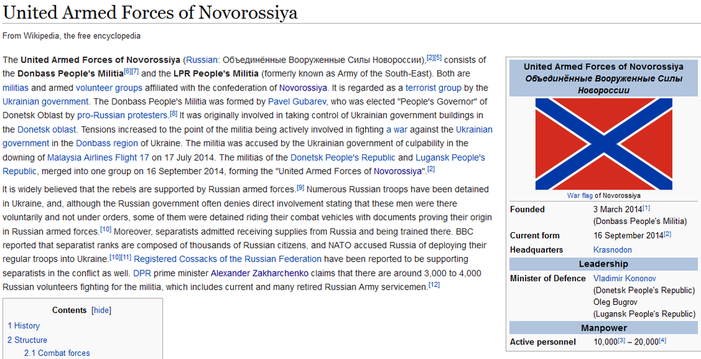
The wavers of a very similar flag likewise did well in Virginia in 1861-64, famously defeating campaign after campaign by superior forces. This reminds me of a satirical song written in 1863 or 1864 called “Richmond is Hard Road”. The song was actually written by a Confederate but its narrator is supposed to be a Union soldier looking back on the six straight debacle-like failures to move against Richmond):
Richmond is a Hard Road to Travel
Of the famous “On to Richmond” double trouble,
Of a half a dozen trips and half a dozen slips
And the very latest bursting of the bubble.
‘Tis pretty hard to sing and like a rolling ring
‘Tis a dreadful knotty puzzle to unravel.
Though all the papers swore, when we touched Virginia’s shore,
That Richmond was a hard road to travel! First McDowell, bold and gay, set forth the shortest way
By Manassas in the pleasant summer weather,
But he unfortunately ran on a Stonewall, foolish man!
And had a rocky journey altogether. […]
It was clear beyond a doubt that he didn’t like the route,
And the second time would have to try another!
I find this song to be very clever. The last two lines there pun cleverly: “Route” (as in path) is pronounced by the singer as rawt, the same as “rout” (as in, a military defeat resulting in the temporary disintegration one an army and its retreat from a battlefield). There were two battles of Manassas, summer ’61 and summer ’62, both failures for the Union. Many of the other puns of this song require knowledge of the U.S. Civil War of more depth even than that, and I don’t get many of them.
Here is a performance of this song by the “2nd South Carolina String Band” (Lyrics):


